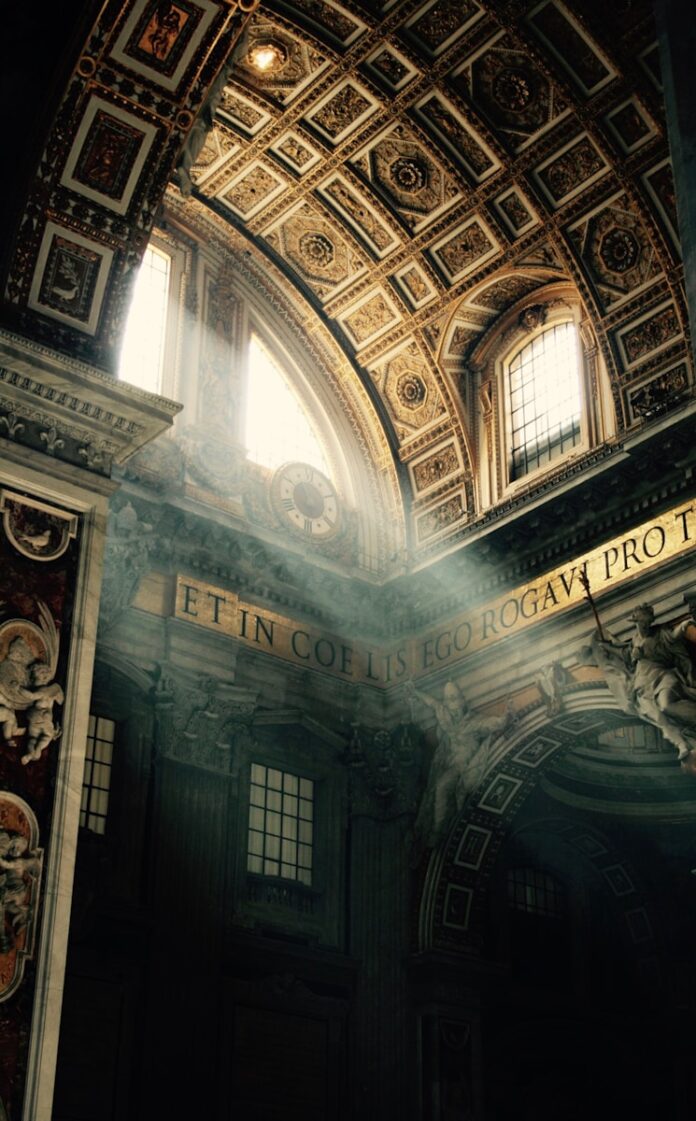Introduction
The Colosseum, an iconic symbol of ancient Rome, stands as a testament to the grandeur and engineering prowess of the Roman Empire. With its massive stone arches and intricate design, the Colosseum has captivated visitors for centuries. The Colosseum Arena Full Experience tour offers an unparalleled journey through history, granting visitors exclusive access to the arena floor, where gladiators once fought for their lives. This tour is not just about seeing the Colosseum; it’s about stepping into the past and experiencing the grandeur of ancient Rome in its most vivid form.
History and Significance of the Colosseum
The Construction of a Marvel
The Colosseum, originally known as the Flavian Amphitheatre, was commissioned by Emperor Vespasian in AD 72 and completed by his son Titus in AD 80. It was built on the site of Nero’s Domus Aurea, a grand palace complex that symbolized the excesses of his reign. The construction of the Colosseum was a political move designed to erase Nero’s legacy and return the land to the people of Rome. Built primarily of travertine limestone and volcanic rock, the Colosseum’s architecture showcases the advanced engineering techniques of the Romans, capable of seating up to 80,000 spectators.
Gladiators, Games, and Spectacles
The Colosseum was primarily used for gladiatorial contests, which were brutal combat events that entertained the Roman populace. These contests were often a fight to the death, with gladiators either being slaves, prisoners of war, or condemned criminals. The arena also hosted other spectacles, including wild animal hunts, executions, and mock naval battles. These events were part of the Roman strategy of “bread and circuses” to keep the population appeased and distracted from political issues.
The Decline and Preservation of the Colosseum
After the fall of the Roman Empire, the Colosseum fell into disrepair. It was used as a quarry for building materials and suffered damage from earthquakes. Despite this, it remained an iconic symbol of Rome, and efforts to preserve and restore it began as early as the 18th century. Today, the Colosseum is a UNESCO World Heritage site and one of the most visited tourist attractions in the world.
The Arena Floor: A Gladiator’s Perspective
Exclusive Access to the Arena
The Colosseum Arena Full Experience tour offers the rare opportunity to stand on the very floor where gladiators once fought. This area, normally off-limits to the general public, provides a unique vantage point from which to view the Colosseum. Standing in the center of the arena, you can truly appreciate the scale and grandeur of the structure, imagining the roar of the crowd as they watched the bloody contests unfold.
The Hypogeum: Beneath the Arena
Beneath the arena floor lies the Hypogeum, a complex network of tunnels and chambers where gladiators and animals were kept before the games. This underground area was a hive of activity during the events, with slaves and stagehands working tirelessly to prepare the fighters and manage the elaborate sets and props. The tour includes a guided exploration of the Hypogeum, offering insight into the behind-the-scenes workings of the Colosseum.
Reliving the Spectacles
As you stand on the arena floor, your guide will recount the history of the spectacles that took place here, bringing to life the stories of famous gladiators and the brutal reality of the games. The tour emphasizes the contrast between the grandeur of the Colosseum and the violence of the events that it hosted, providing a thought-provoking experience that goes beyond the typical tourist visit.
Exploring the Colosseum: Key Highlights
The Outer Ring: Arches and Architecture
The Colosseum’s exterior is characterized by its three tiers of arches, each adorned with columns in different classical orders: Doric, Ionic, and Corinthian. These arches not only supported the structure but also provided entrances and exits for the thousands of spectators. As you explore the outer ring, you’ll notice the intricate details of the architecture, from the pilasters and capitals to the carved reliefs that depict scenes from Roman mythology.
The Seating Area: A Social Hierarchy
The seating within the Colosseum was arranged according to social status. The Imperial Box offered the best view and was reserved for the emperor and his entourage, while the Senatorial Seats were for the Roman elite. The further up you went, the lower the social rank, with the top tiers reserved for women and the poor. This arrangement reflects the rigid social hierarchy of ancient Rome. During the tour, you’ll have the opportunity to walk through these different seating areas, gaining an understanding of how Roman society was structured.
The Velarium: Shade for the Spectators
One of the engineering marvels of the Colosseum was the Velarium, a massive retractable awning that provided shade for the spectators. Made of canvas, the Velarium was supported by a complex system of ropes and pulleys operated by sailors from the Roman navy. Although the original Velarium no longer exists, the tour provides insights into how this ingenious system worked, offering a glimpse into the advanced technology of the time.
The Arch of Constantine
Just outside the Colosseum stands the Arch of Constantine, a triumphal arch erected in AD 315 to commemorate Constantine’s victory at the Battle of Milvian Bridge. The arch is a masterpiece of Roman art, featuring reliefs that depict various scenes from Constantine’s reign. The tour includes a visit to this iconic monument, exploring its historical significance and artistic details.
Palatine Hill: The Birthplace of Rome
The Legend of Romulus and Remus
The Palatine Hill, one of the Seven Hills of Rome, is where the legendary founders of Rome, Romulus and Remus, were said to have been raised by a she-wolf. According to myth, Romulus later founded the city on this hill after killing his brother Remus. The tour includes a guided walk through the Palatine Hill, where you can explore the ruins of ancient palaces and temples that date back to the earliest days of Rome.
The Imperial Palaces
Palatine Hill was the chosen residence of many Roman emperors, including Augustus, Tiberius, and Domitian. The ruins of their palaces still stand today, offering a glimpse into the opulent lifestyles of the Roman elite. The Domus Augustana and Domus Flavia are among the most impressive structures, featuring elaborate frescoes, mosaics, and marble floors. The tour provides an in-depth exploration of these palatial residences, revealing the grandeur and power of Rome’s emperors.
The Farnese Gardens
The Farnese Gardens, established in the 16th century, are a beautiful addition to the Palatine Hill. These Renaissance gardens offer stunning views over the Roman Forum and the city of Rome. The tour includes a visit to the gardens, where you can enjoy a peaceful stroll among the terraces, fountains, and statues, providing a serene contrast to the ruins of the ancient city.
Roman Forum: The Heart of Ancient Rome
The Political and Religious Center
The Roman Forum was the center of public life in ancient Rome, serving as a hub for political, religious, and commercial activities. The Forum was home to many of Rome’s most important buildings, including the Senate House, the Temple of Saturn, and the Temple of Vesta. As part of the tour, you’ll walk through the ruins of the Forum, with your guide explaining the significance of each structure and the events that took place here.
The Via Sacra: A Walk Through History
The Via Sacra, or Sacred Way, was the main street of ancient Rome, leading from the Palatine Hill through the Forum to the Colosseum. This road was the route taken by victorious generals during their triumphal processions, and it was lined with important temples and monuments. Walking along the Via Sacra as part of the tour allows you to follow in the footsteps of history, imagining the grandeur of Rome at its height.
The Arch of Titus
At the eastern end of the Forum stands the Arch of Titus, a triumphal arch erected in AD 81 to commemorate Emperor Titus’s victory in the Jewish War. The arch is famous for its reliefs depicting the spoils of the Siege of Jerusalem, including the Menorah from the Second Temple. The tour includes a detailed exploration of the arch, with your guide explaining its historical significance and the artistry of its carvings.
Practical Information for Your Colosseum Tour
Tour Duration and Timing
The Colosseum Arena Full Experience tour typically lasts around 3 hours, offering ample time to explore the Colosseum, Palatine Hill, and Roman Forum in depth. Morning tours are recommended to avoid the crowds and enjoy the sites in cooler temperatures.
What to Wear and Bring
- Comfortable Shoes: The tour involves a fair amount of walking, often on uneven surfaces, so sturdy footwear is essential.
- Sun Protection: Hats, sunglasses, and sunscreen are recommended, especially during the summer months.
- Water Bottle: Staying hydrated is important, particularly in the warmer months. Water fountains are available at the sites.
Ticket Information
Tickets for the Colosseum Arena Full Experience can be booked in advance online. Due to the popularity of the tour, early booking is highly recommended. Your ticket includes entry to the Colosseum, Palatine Hill, and Roman Forum, as well as access to the arena floor and Hypogeum.
Health and Safety Considerations
The Colosseum is an ancient structure with uneven floors and steep steps, so it may not be suitable for those with mobility issues. However, efforts have been made to improve accessibility, with elevators available for some areas. The tour also adheres to current health and safety guidelines, including limited group sizes and mandatory face coverings in certain areas.
Conclusion
The Colosseum Arena Full Experience is more than just a tour; it’s a journey through time that immerses you in the history and culture of ancient Rome. From standing on the arena floor to exploring the ruins of the Roman Forum, this experience offers a comprehensive and unforgettable look at the heart of the Roman Empire. Whether you’re a history enthusiast or simply looking to explore one of the world’s most iconic landmarks, this tour is a must-do on any visit to Rome.
Booking Your Experience
To ensure you don’t miss out on this incredible experience, we recommend booking your tour through Viator, a trusted provider of high-quality travel experiences. Visit Viator to secure your spot on the Colosseum Arena Full Experience tour today.
For more detailed travel guides and to explore other destinations, visit Izase. Please note that details and prices for the tours may change, so always check the latest information before booking.
Disclaimer: The information provided in this article is based on the most current data available at the time of writing. However, due to ongoing preservation efforts and changes in visitor policies, some details of the Colosseum Arena Full Experience may be subject to change.
MORE FROM IZASE


